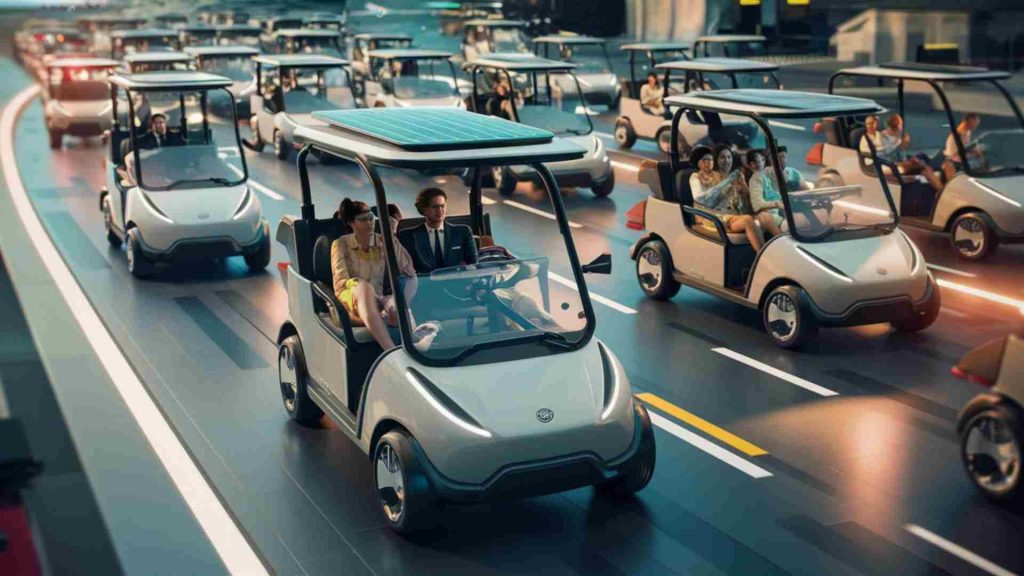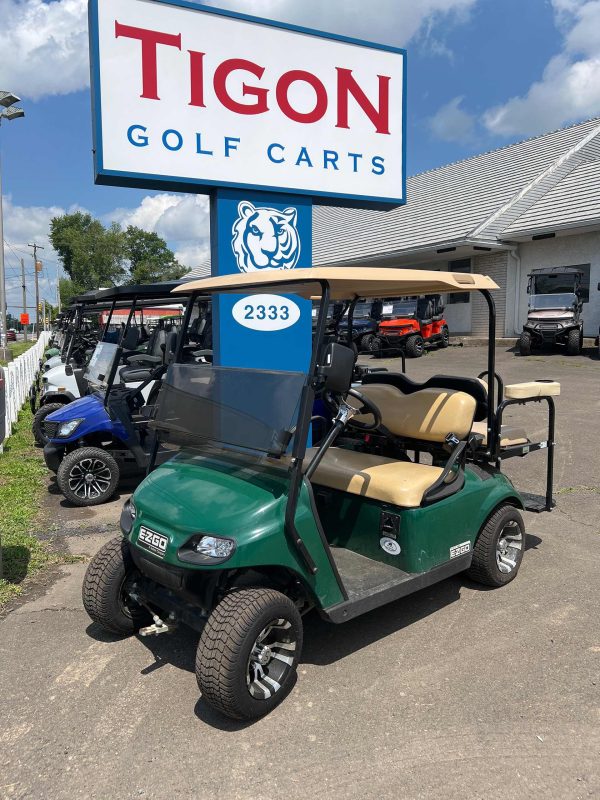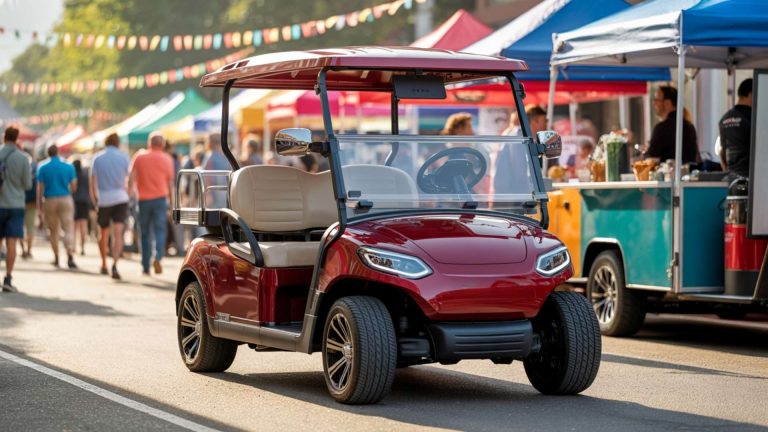
Golf Carts: The Way of the Future for Personal Transportation
The Evolving Landscape of Personal Transportation
As urban areas grow and environmental concerns intensify, the landscape of personal transportation is evolving. Traditional vehicles, with their high emissions and significant operating costs, are gradually being supplemented by more sustainable and efficient alternatives. Among these, golf carts are emerging as a viable and sustainable option for short-distance travel.
Thesis Statement: Golf Carts as Viable and Sustainable Options
Golf carts, traditionally associated with golf courses, are increasingly recognized for their potential as everyday personal transportation. Their environmental benefits, economic advantages, and practicality make them an attractive choice for urban and suburban use.
Environmental Benefits
Low Emissions
Golf carts, especially electric models, produce significantly lower emissions compared to traditional gas-powered vehicles. This reduction in emissions contributes to a cleaner and healthier environment.
Reduced Carbon Footprint
By utilizing electric power, golf carts help reduce the carbon footprint associated with personal transportation. This is a crucial step toward combating climate change and improving air quality in urban areas.
Energy Efficiency
Golf carts are highly energy-efficient, making the most of their electric power to provide sufficient range for daily commutes and errands.
Use of Electric Power
Electric golf carts rely on rechargeable batteries, which can be charged using standard electrical outlets. This eliminates the need for gasoline and reduces dependency on fossil fuels.
Reduces Reliance on Fossil Fuels
By shifting to electric power, golf carts help decrease the overall demand for fossil fuels, promoting a more sustainable and energy-efficient transportation system.
Economic Advantages
Cost-Effectiveness
Golf carts offer significant cost savings compared to traditional cars, both in terms of initial purchase price and ongoing maintenance costs.
Lower Purchase Costs
The initial investment for a golf cart is considerably lower than that for a conventional car. Prices range from $2,000 to $20,000, making them an affordable option for many households.
Reduced Maintenance Expenses
Golf carts require less maintenance than traditional vehicles. Electric models, in particular, have fewer moving parts, reducing the frequency and cost of repairs.
Affordability of Electric Power
Electric golf carts are cheaper to run than gasoline-powered vehicles, offering substantial savings on fuel costs.
Cheaper Running Costs Compared to Gasoline
The cost of electricity for charging a golf cart is significantly lower than the cost of gasoline, making electric golf carts an economically viable option for daily transportation.
Practical Applications
Urban Use
Golf carts are ideal for urban environments, where their low speed and compact size allow for easy navigation and parking.
Short Commutes
For short commutes within city limits, golf carts provide a convenient and efficient mode of transportation.
Inner-City Travel
Golf carts are perfect for inner-city travel, allowing residents to move around quickly and easily without contributing to traffic congestion.
Suburban Use
In suburban areas, golf carts are increasingly popular for community travel and recreational purposes.
Community Travel
Golf carts are widely used in communities for errands, social visits, and trips to local amenities, providing a convenient and eco-friendly transportation option.
Recreational Purposes
Golf carts are also used for recreational activities, such as exploring parks and trails, making them versatile vehicles for suburban residents.
Technological Advancements
Improved Battery Life
Technological advancements have significantly improved the battery life of golf carts, extending their driving range and enhancing their practicality.
Longer Driving Range
Modern golf carts can travel longer distances on a single charge, making them more suitable for daily use and longer trips within communities.
Enhanced Features
Golf carts now come equipped with advanced features that enhance their functionality and safety.
Smart Technology Integration
Integration of smart technology, such as GPS systems and mobile connectivity, makes golf carts more user-friendly and efficient.
Safety Features
Golf carts are equipped with essential safety features, including seat belts, headlights, turn signals, and mirrors, ensuring safe operation on public roads.
Social and Cultural Impact
Changing Perceptions
The perception of golf carts is shifting from being merely recreational vehicles to becoming a practical mode of transportation.
From Golf Courses to City Streets
Golf carts are no longer confined to golf courses; they are now seen on city streets, used for a variety of everyday tasks.
Community Acceptance
The growing acceptance of golf carts in residential areas highlights their practicality and benefits.
Growing Popularity in Residential Areas
Communities across the United States, particularly on the East Coast, are embracing golf carts as a primary means of transportation, reflecting their increasing popularity and utility.
Challenges and Considerations
Regulatory Issues
Despite their benefits, golf carts face regulatory challenges that must be addressed to ensure their widespread adoption.
Legal Restrictions
Regulations governing the use of golf carts on public roads vary by state and locality, necessitating awareness and compliance with local laws.
Infrastructure Needs
To support the growth of golf carts, infrastructure improvements are necessary.
Charging Stations
The installation of charging stations is essential to facilitate the use of electric golf carts and ensure their practicality for daily use.
Road Adaptations
Road adaptations, such as designated lanes and signage, can enhance the safety and convenience of using golf carts in urban and suburban areas.
Conclusion
Summary of Benefits
Golf carts offer numerous benefits, including environmental sustainability, economic savings, and practical applications for urban and suburban transportation. Their low emissions, cost-effectiveness, and advanced features make them a compelling option for personal transportation.
Future Outlook
The future of personal transportation is likely to see an increased adoption of golf carts, driven by their advantages and evolving infrastructure support.
Potential Growth
As more communities recognize the benefits of golf carts, their usage is expected to grow, contributing to a more sustainable and efficient transportation system.
Long-Term Impact on Transportation
The long-term impact of golf carts on personal transportation could be significant, reducing reliance on traditional vehicles and promoting greener, more affordable travel options.
GET THE GOLF CART LSV AT THE RIGHT PRICE!
Tigon Golf Carts proudly offers 0% Vehicle Financing, making it easier than ever to own your dream golf cart. With flexible payment options and competitive rates, we ensure that Upgrading or Purchasing for the first time is not only exciting but also financially feasible for our customers, allowing you to hit the road in style without breaking the bank.

















